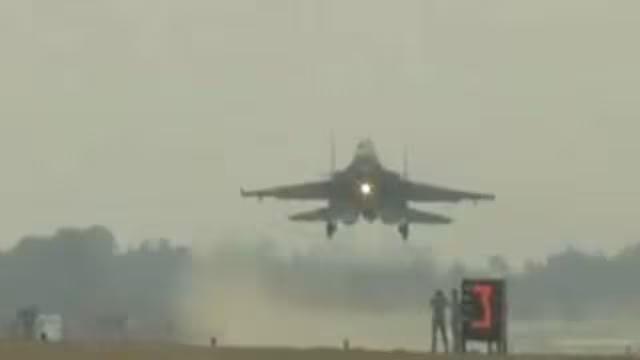
Why is IAF conducting fighter jets’ landing & take-off drill at Ganga Expressway in UP?
In a recent move that has sparked interest among defense enthusiasts and citizens alike, the Indian Air Force (IAF) conducted a landing and take-off drill at the Ganga Expressway in Uttar Pradesh. The exercise, which saw fighter jets like the Rafale participating, aimed to assess the expressway’s potential as an alternative runway during times of war or national emergencies. The impressive display of aerial prowess has raised several questions about the significance of this exercise and the capabilities of the Ganga Expressway.
For those who may not be aware, the Ganga Expressway is a 632-kilometer-long highway that connects Lucknow to Prayagraj in Uttar Pradesh. The expressway is designed to reduce travel time between the two cities and has been constructed with advanced infrastructure and technology. The IAF’s decision to conduct the landing and take-off drill at this location is a testament to the expressway’s capabilities and its potential as an alternative runway.
So, why is the IAF conducting this exercise, and what does it mean for the country’s defense preparedness? To understand the significance of this exercise, it is essential to delve into the background of the Ganga Expressway and the IAF’s requirements.
The Ganga Expressway: A High-Tech Highway
The Ganga Expressway is a critical infrastructure project that has been undertaken to reduce travel time between Lucknow and Prayagraj. The expressway is designed to cater to the needs of a growing population and is expected to reduce travel time between the two cities by several hours. The expressway has been constructed with advanced technology and infrastructure, including high-speed lanes, intelligent transportation systems, and advanced lighting systems.
The Ganga Expressway is also designed to be a self-sustaining infrastructure project, with facilities like restaurants, restrooms, and emergency services available along the way. The expressway is expected to become a major transportation artery in the region, connecting key cities and towns.
The IAF’s Requirements
The Indian Air Force (IAF) is one of the most powerful air forces in the world, with a reputation for its agility, precision, and bravery. The IAF plays a critical role in India’s defense strategy, providing air support to the Indian Army and Navy during times of war or national emergencies.
The IAF has a long history of using alternative runways and airstrips to ensure its operational readiness. During times of war or national emergencies, the IAF uses these airstrips to deploy its fighter jets and other aircraft, providing air support to the military and civilians alike.
The Significance of the Landing and Take-Off Drill
The landing and take-off drill conducted by the IAF at the Ganga Expressway is a significant exercise that demonstrates the expressway’s potential as an alternative runway. The drill involved fighter jets like the Rafale, which are some of the most advanced aircraft in the IAF’s fleet.
The exercise aimed to assess the expressway’s capabilities in terms of landing and taking off at both day and night. The IAF used advanced instruments and equipment to monitor the performance of the fighter jets, gathering data on their speed, altitude, and other parameters.
The drill was a testament to the IAF’s commitment to its operational readiness and its ability to adapt to changing circumstances. The exercise demonstrated the IAF’s ability to use alternative runways and airstrips, providing air support to the military and civilians alike.
What Does This Mean for India’s Defense Preparedness?
The landing and take-off drill conducted by the IAF at the Ganga Expressway is a significant development in India’s defense preparedness. The exercise demonstrates the IAF’s ability to use alternative runways and airstrips, providing air support to the military and civilians alike.
The drill also highlights the Ganga Expressway’s potential as an alternative runway, providing a secure and reliable platform for the IAF to deploy its fighter jets and other aircraft. The exercise is a testament to the IAF’s commitment to its operational readiness and its ability to adapt to changing circumstances.
Conclusion
The landing and take-off drill conducted by the IAF at the Ganga Expressway is a significant exercise that demonstrates the expressway’s potential as an alternative runway. The exercise was a testament to the IAF’s commitment to its operational readiness and its ability to adapt to changing circumstances.
The drill also highlights the Ganga Expressway’s capabilities and its potential as a critical infrastructure project. The expressway is designed to cater to the needs of a growing population and is expected to reduce travel time between Lucknow and Prayagraj by several hours.
As India continues to grow and develop, it is essential for the country to invest in critical infrastructure projects like the Ganga Expressway. The IAF’s decision to conduct the landing and take-off drill at the expressway is a testament to its importance and its potential as an alternative runway.
Source:






